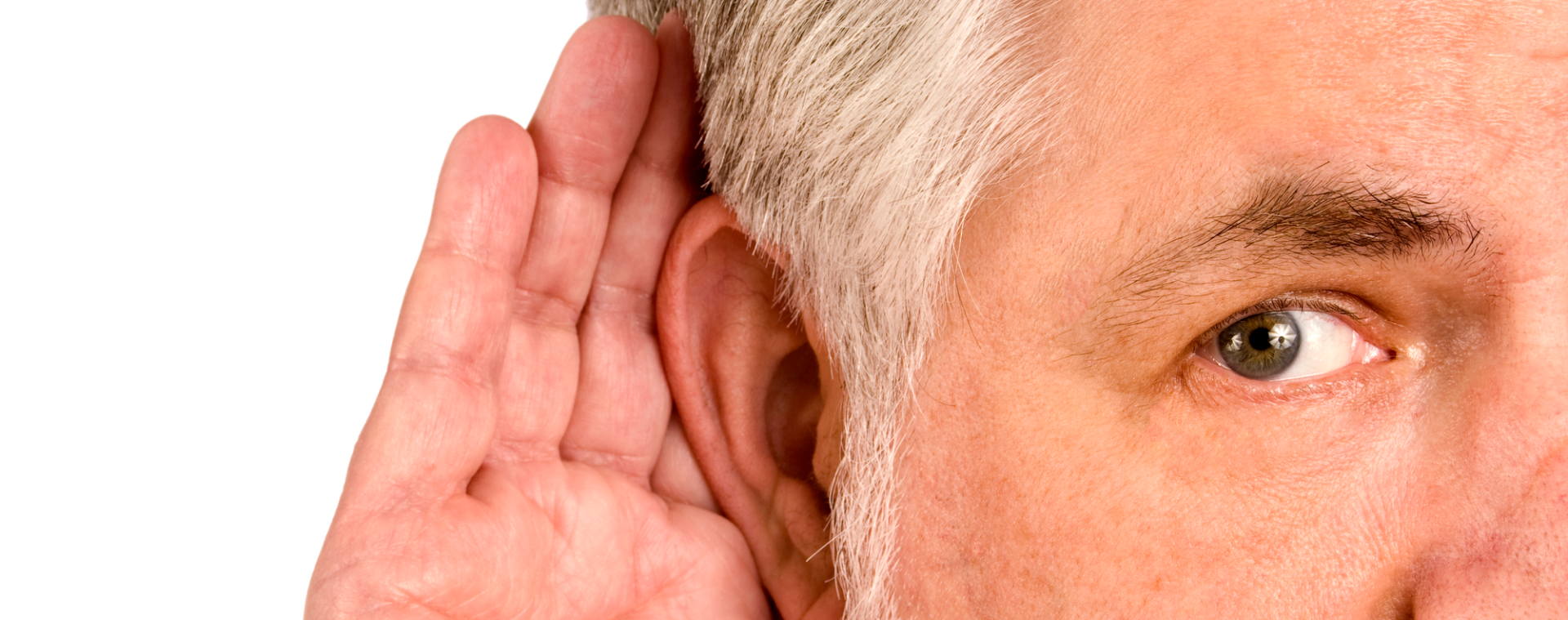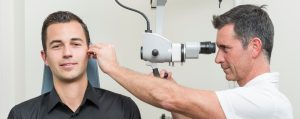HEARING IMPAIRMENT: THE DIFFERENT TYPES AND DEGREES OF HEARING LOSS

28 November 2019
Hearing loss isn’t the same for everybody: in fact, it may involve just one ear or both, affect the outer or the inner ear, and have different levels of severity. Whether you have trouble hearing a distant conversation clearly or you need a hearing aid to take part in an intimate discussion, hearing loss is a hearing impairment that must be identified so that it can be treated.
The different types of hearing loss
In order to differentiate the different types of hearing loss, it’s first necessary to understand the two functions of the hearing aid. The first function is to transmit the external sound waves, which is done by the outer ear. The second function is to convert these sound waves into messages to the brain, which is done through the inner ear.
We can therefore distinguish four types of hearing loss:
– Perceptive (or sensorineural) deafness, the most common type of deafness, which corresponds to damage to the hair cells of the inner ear. The causes of such damage are many and varied, ranging from aging and exposure to loud noises to certain diseases, infections, hereditary disorders, prenatal issues, etc. This type of deafness is usually treated by using a hearing aid, depending on its severity.
– Conductive deafness, which affects the outer and middle ear as well as the transmission of sound to the inner ear. This can be caused by a perforated eardrum, an earwax blockage, an ear infection, or hereditary factors. Some cases can be treated medically or surgically.
– Mixed deafness combines perceptive and conductive deafness. Its characteristics also combine those of the two types of deafness: an inability to transmit sounds to the inner ear as well as damage to the inner ear or the auditory nerve.
– Central deafness is the rarest type of hearing loss. It results from damage to or a deficiency in the central nervous system, and can be located in the nerve connections of the brain.
Once the type of hearing loss has been identified, its degree just has to be determined to complete the diagnosis.
The different degrees of hearing loss
All types of deafness are measured during a hearing test, during which the specialist analyzes the minimum sound level that their patient can perceive, which they then compare with the normal hearing threshold. The number of decibels lost compared to the average is then calculated.
We can thus acknowledge different degrees of hearing loss, each marked by an average number of decibels lost and an inability to hear certain sounds.
– Mild hearing loss corresponds to a loss of 20 to 40 decibels. Affected individuals have trouble hearing clearly in noisy environments. Quiet or moderately loud sounds are hard to perceive, such as a quiet conversation in a play.
– Moderate hearing loss corresponds to a loss of 41 to 70 decibels. This level of deafness doesn’t allow affected individuals to hear noises that are close to them or quite loud. Comprehension is especially difficult when there are background noises. A hearing aid is highly recommended at this stage.
– Severe hearing loss is equivalent to a loss of 71 to 90 decibels. This level corresponds to an inability to hear loud conversations or a phone conversation without a hearing aid.Serious or profound hearing loss is diagnosed at 91 or more lost decibels. This is the degree of hearing loss of an adult who has become deaf, for whom only very loud noises can be heard or felt as vibrations.
Autres articles
THE IMPORTANCE OF A BINAURAL HEARING AID
Many people who are hard of hearing only wear a single hearing aid. However, more than three quarters of the…
SYMPTOMS OF A RUPTURED EARDRUM AND MOVEMENTS TO ADOPT
A ruptured eardrum is very common and may occur for many reasons. How do you recognize it and what should…
HOW TO INTEGRATE CONNECTED HEARING AIDS INTO YOUR DAILY LIFE
To provide the best possible service to improve the daily lives of hearing-impaired people, connected hearing aids and their complementary…


